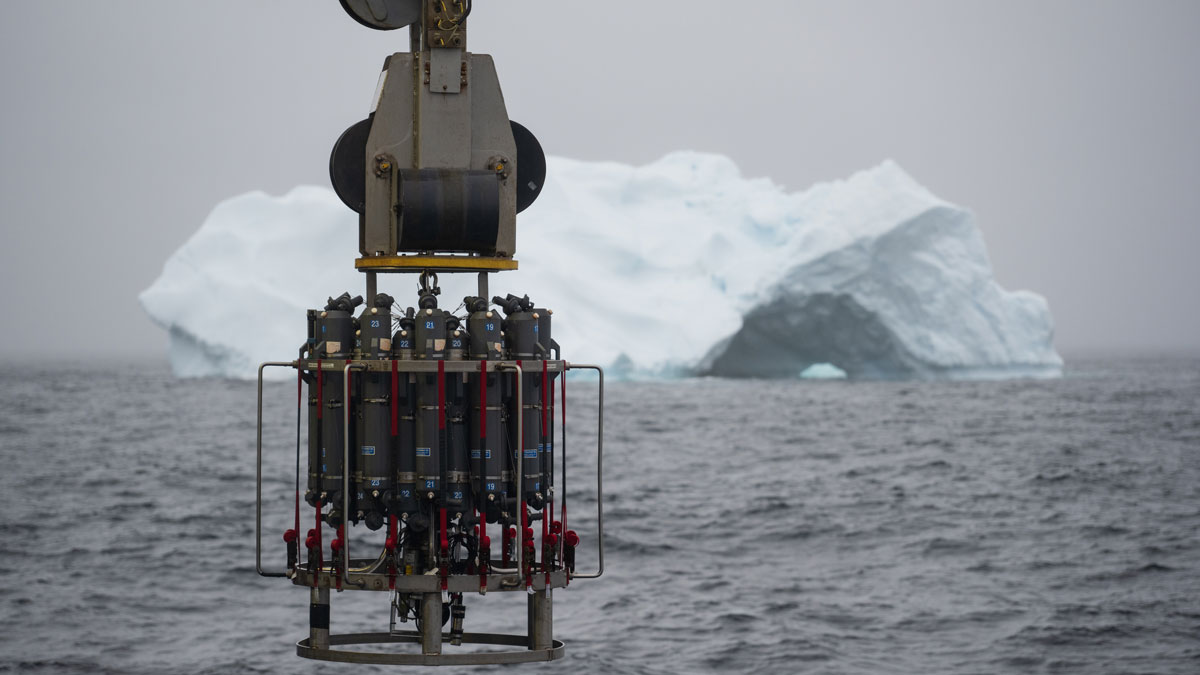Source: Journal of Geophysical Research: Oceans
The Atlantic Meridional Overturning Circulation (AMOC) serves as the Atlantic Ocean’s conveyor belt, transporting warm water north toward the Arctic Circle and returning cold, dense water back to the tropics. Nearshore areas off Greenland are critical sites in AMOC, influencing the redistribution of heat and nutrients around the world.
The continental shelf along Greenland’s coast is marked by deep grooves called glacial troughs that extend from the mouths of glacially carved fjords to the open ocean. Research in Antarctica suggests glacial troughs there enhance the mixing of cold and warm waters, but few observations have been collected to determine whether the same is true of Greenland’s troughs.
Aboard R/V Neil Armstrong in late summer 2022, as part of an Overturning in the Subpolar North Atlantic Program cruise funded by the National Science Foundation, Nelson et al. explored how troughs influence ocean circulation around Greenland. They collected data in southwestern Greenland at the Narsaq Trough, which is 30 kilometers wide at its mouth and reaches 600 meters at its deepest point—about 4 times deeper than the average surrounding continental shelf. Gathering measurements along multiple ship tracks allowed the researchers to compare water mass properties in and outside the trough, describe flows in and around it, and estimate the mixing of waters with different temperatures and nutrient concentrations.
The results showed that the Narsaq Trough provides a pathway for warm, salty Atlantic Water to intrude onto the continental shelf and mix with cold, fresh polar waters. Consequently, waters in the trough are fresher, richer in oxygen, less rich in nutrients, and sometimes colder than nearby offshore waters. These changes in water conditions may slightly limit melting of glacial ice in the adjacent fjord. Furthermore, the trough creates subsurface circulation that likely exports the modified water from the trough, which may increase stratification and decrease deepwater formation off the continental shelf.
The study offers new insights into Greenland’s understudied glacial troughs and their role in modulating the climate system, the authors say. They note, however, that more work is needed to establish the troughs’ cumulative effects on global ocean circulation. (Journal of Geophysical Research: Oceans, https://doi.org/10.1029/2024JC022246, 2025)
—Aaron Sidder, Science Writer



